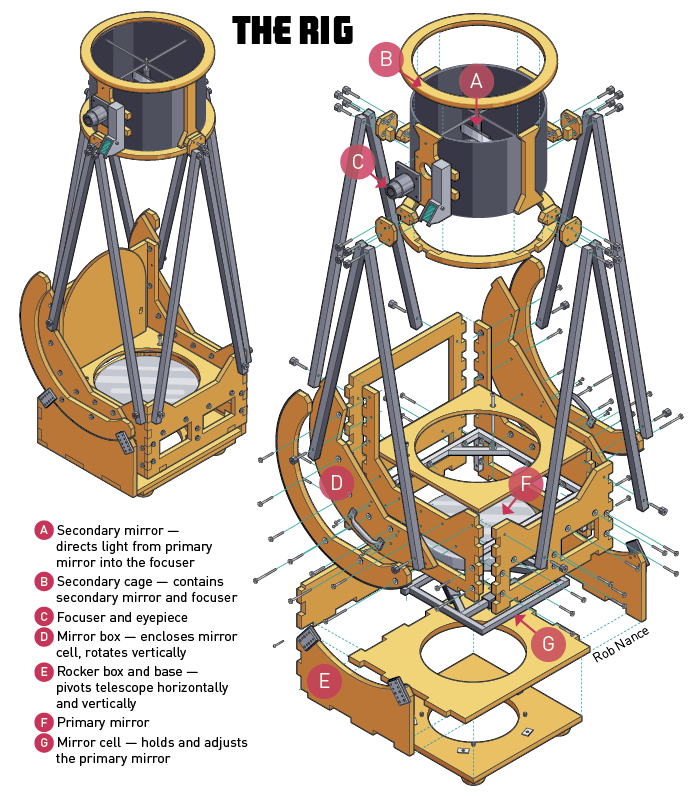
Dobsonian telescopes are popular with amateur telescope makers for their ease of design and construction, portability, and their use of large optical mirrors. Pioneered by John Dobson in the 1960s, the instrument combines a Newtonian reflector telescope with a unique two-axis movable base. It uses a primary mirror to capture and reflect light, a secondary mirror to direct light into an eyepiece, and a focuser to make fine adjustments for viewing. The telescope’s size is classified by the size of its mirror.

I was inspired to build telescopes during a trip out to McDonald Observatory in west Texas, where I saw a 36” fork-mounted telescope, tiny in comparison to the huge research telescopes at the site. After picking up a copy of The Dobsonian Telescope by David Kriege, I built my first telescope with a 12½”-diameter mirror, then later tackled a 12″ lightweight scope.

Once I’d built a CNC router, I embarked on my third telescope, featuring a 16″ primary mirror with aluminum trusses, wide vertical bearing arcs, a steel front-adjustable mirror cell, and a rotating base. The project took several months off and on to complete, although a skilled Maker could put a similar one together in a few weeks. I’m quite happy with the result, and the view in its large mirror is phenomenal.
All Dobsonian telescope projects are unique builds — here are the notes from my latest version to help get you familiar with the process and determine how you’ll design yours. I also have an extended photographic build diary of this telescope posted on Imgur.
Above you’ll find an interactive 3D rendering of the Sketchup file I used to design and cut all of the parts for my telescope. You can view and download the full file here.










 This is the upper tube that contains the flat secondary mirror, Telrad finder, and focuser. In my build, the cage was cut on a CNC router from ¾” plywood, with threaded T-nuts added to support a truss assembly.
This is the upper tube that contains the flat secondary mirror, Telrad finder, and focuser. In my build, the cage was cut on a CNC router from ¾” plywood, with threaded T-nuts added to support a truss assembly.

















